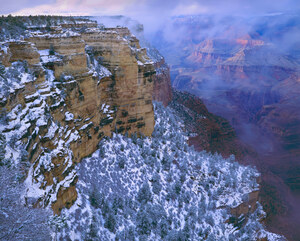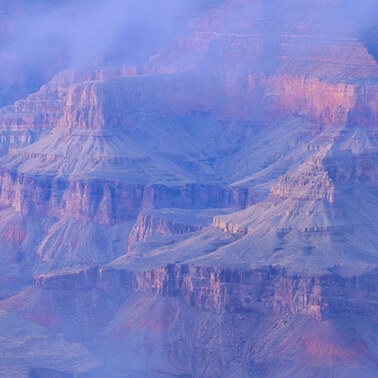
Winter sunset, Grand Canyon, Arizona
A great, gradual upwarp of the broad, flat region all around what is now the Grand Canyon forced the Colorado River to become more and more deeply entrenched over a period of some 7 to 9 million years. The upwarp is plainly visible from a light plane, looking like an exaggerated Earth's curvature. The youngest rocks in the Canyon (at the top) are over 225 million years old, and the oldest (at the bottom) more than eight times older still. The altitude at the south rim, about 7,000 feet above the sea, is nearly 5,000 feet above the river, and so that rim is about 20 to 25 degrees Fahrenheit cooler than the bottom. The north rim is about 8,000 feet above the sea, and is cooler still, with a more montain forest. Temperatures in northern Arizona exhibit a great diurnal fluctuation (daily maximum to minimum) and a great seasonal fluctuation as well. Inclement weather usually adds another big temperature swing. On one spring trip, I was camped on the rim in 28-degree evening air, with a stiff wind and blowing snow, and two days later walking through an 85-degree oven of sun-baked black rocks carrying a heavy pack. This January photograph illustrates how several inches of snow at the rim didn't bring enough of a chill to even whiten the ground, more than about one eighth of the way down into the gorge.

